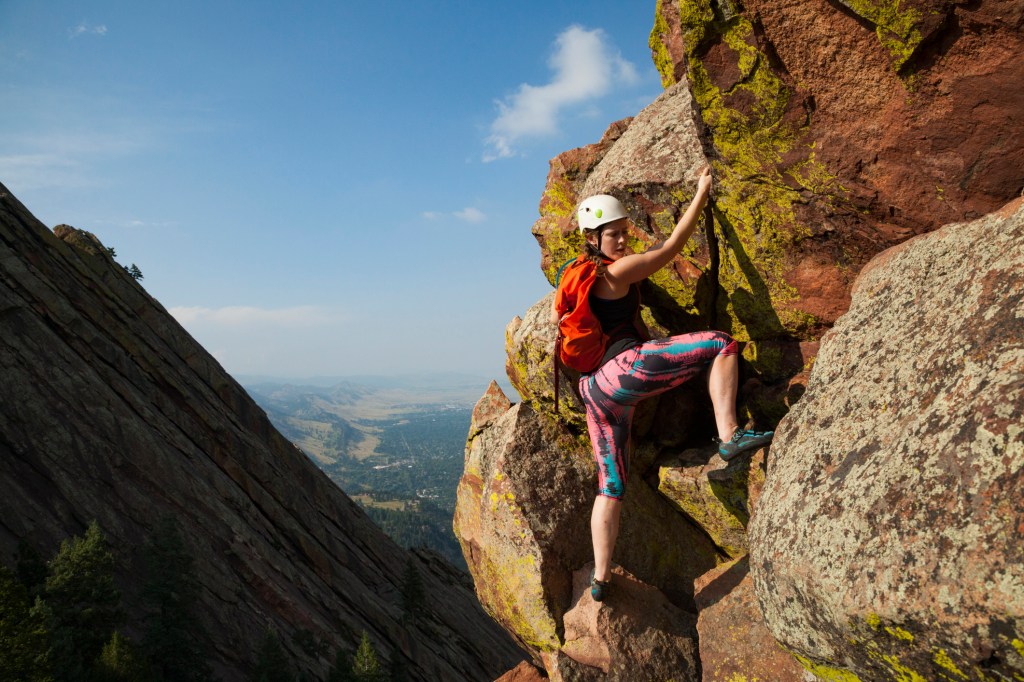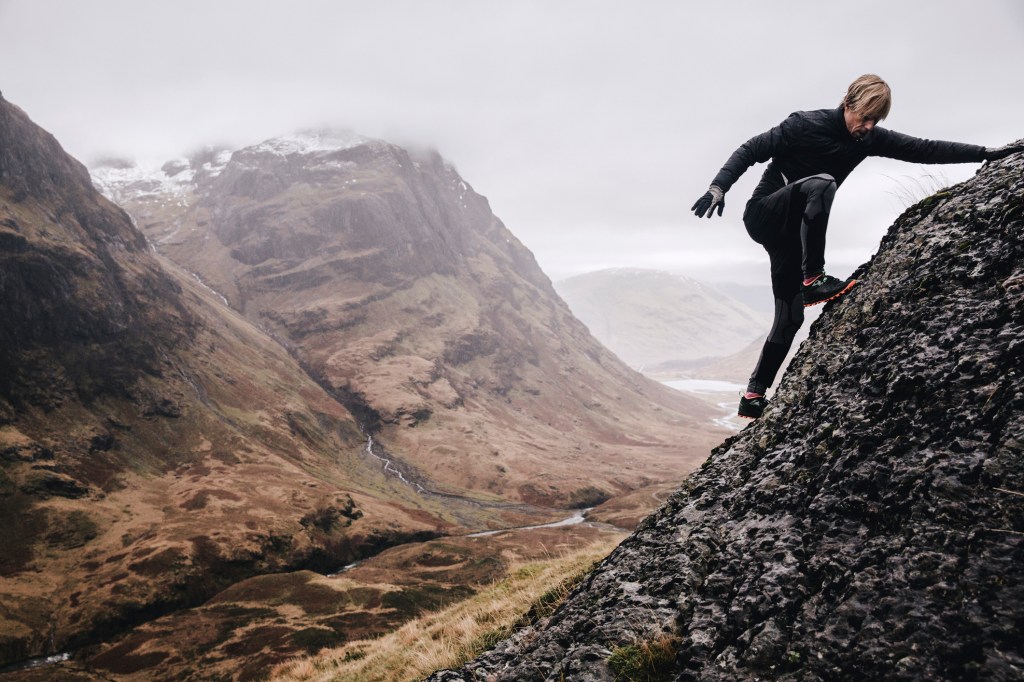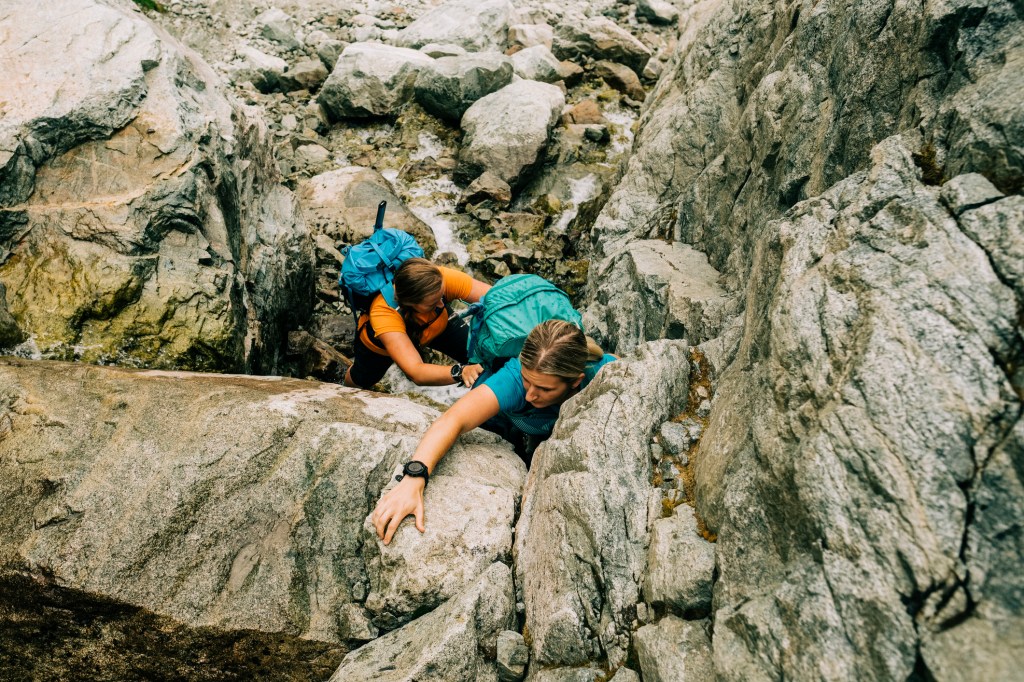

Climbing up a rock face without rope is dangerous, difficult and there is no room for error. But if it’s a life or death situation and you can’t get around the rock face, Bear Grylls has some guidance.
Videos by Outdoors
Plan your route
It is vital to do this before you start climbing. Professional climbers spend a long time at the bottom of a rock face, to work out the best route.
Climbing down is harder than climbing up as you can’t see where you are going, so make sure you know what way you want to go before you start.
“I’ve done some gnarly climbs that haven’t gone the way I’ve wanted, and I’ve chosen to carry on by traversing via an alternative route rather than go back down,” says Bear in How to Stay Alive.

Know what to look for—and what to avoid
In planning your route, look for anything that can offer a foot or hand hold. This includes cracks—both vertical and horizontal—plus ledges, big features, less steep areas, and solid rock rather than crumbling terrain.
Visualize yourself doing the climb: Where will you put your feet and your hands?
“Mentally put yourself on that cliff and plan every stage of the climb,” says Bear.
Also make mental note of riskier sections, such as wet areas, loose rock or gravel, overhangs and any green areas, which could be slimy and turn into death traps.
Use your whole body
Climbing is not just about arms, and it needs other factors to work. First, to maintain balance, you’ll want to keep your body close to the wall. Don’t arch back, which will put the weight onto your arms and use up too much energy.
You also need core stability, so keep your core muscles tense. “Really focus on this, as it will keep your limbs and hips in the proper alignment,” says Bear.
The muscles in your legs are stronger than your arms, and so are more efficient tools for getting up the rock face. Use your arms for balance but your legs to climb—this will use up a lot less energy as well, as the bigger muscles in your lower half take longer to exhaust than your upper body.
You also need plenty of nerve but absolutely no nervousness. Don’t let fear take over—you’ll start to shake and use up too much adrenaline.
“I’ve had it a few times when climbing, right at that difficult move. In the climbing world it’s called ‘disco leg,’” says Bear.

Commit to the climb
It’s not a race, so take your time to avoid burning out too quickly. However, the longer you are on the rock face, the more exhausted you will become, so keep moving as best you can. Stopping to hold on to the rock face looking for a move will drain your energy fast—which is why all that preplanning was so important.
“It’s human nature to stop as you try to muster the courage to go for a big move,” says Bear. “But if your situation isn’t going to improve by waiting, you’re much better advised to make a quick decision and turn it into an action.”
People also react to fear by freezing, which of course won’t get you to safety any quicker. Your goal is to find a balance between making intentional progress and not making hasty, bad decisions. If you find yourself stuck, there’s no harm in backtracking to more solid footing, resting and trying again.
“Ultimately, don’t be too proud to retreat,” says Bear. “Retreat isn’t failure. In climbing, retreat is living long enough to have another attempt. The greatest feats of climbing have often taken years to achieve. Patience is important.”

Learn these emergency climbing techniques
Bear suggests three techniques that will get you up a rock face faster.
Chimneying: This is the technique when you’re climbing inside a vertical crack or between two opposing rock faces. Start with your back against one wall. Put one hand and one foot against each wall. Straighten your legs to push yourself upwards. Re-establish your hand position. Move your back leg so it’s adjacent to your front leg and move your front leg to the back position. Repeat.
Stemming: An alternative to chimneying is stemming, where you face your body perpendicularly to the crevice or rock faces. Spread your arms and legs out into an X shape and then shuffle side-to-side up the rock face.
Manteling: To get onto a ledge or over the top of a cliff, the technique is called manteling.
First, line up your chest to the level of the ledge using your arms and legs. Get your heel over the ledge and push with your hands and elbows to raise your body to ledge height.
More from Bear Grylls:
- How to Make a Toothbrush in the Wild
- Driving in the Snow
- How to Build Shelter in a Forest
- How to Survive Sub-Zero Temperatures
- What to do If You’re Bitten by a Snake
- How to Navigate Without a Compass
- How to Deal with Injuries in Survival Situations
- How to Find Water in the Mountains
- Making Shelter in the Snow
- Priorities of Survival
- How Bear Grylls Lights a Fire










I really like the subject of this post and look forward to seeing more.
Bear Grylls provides guidance on how to climb a rock face without a rope. Plan your route in advance, identifying potential hand and foot holds, and visualize the climb. Use your whole body while climbing, paying attention to core stability and energy conservation. Commit to the climb, avoiding over-exertion, freezing, and making bad decisions. Bear also suggests three emergency climbing techniques: chimneying, stemming, and manteling.
Can you let me know when your new blog posts will come out?
Thank you
Juan Miller – Crosserx.com